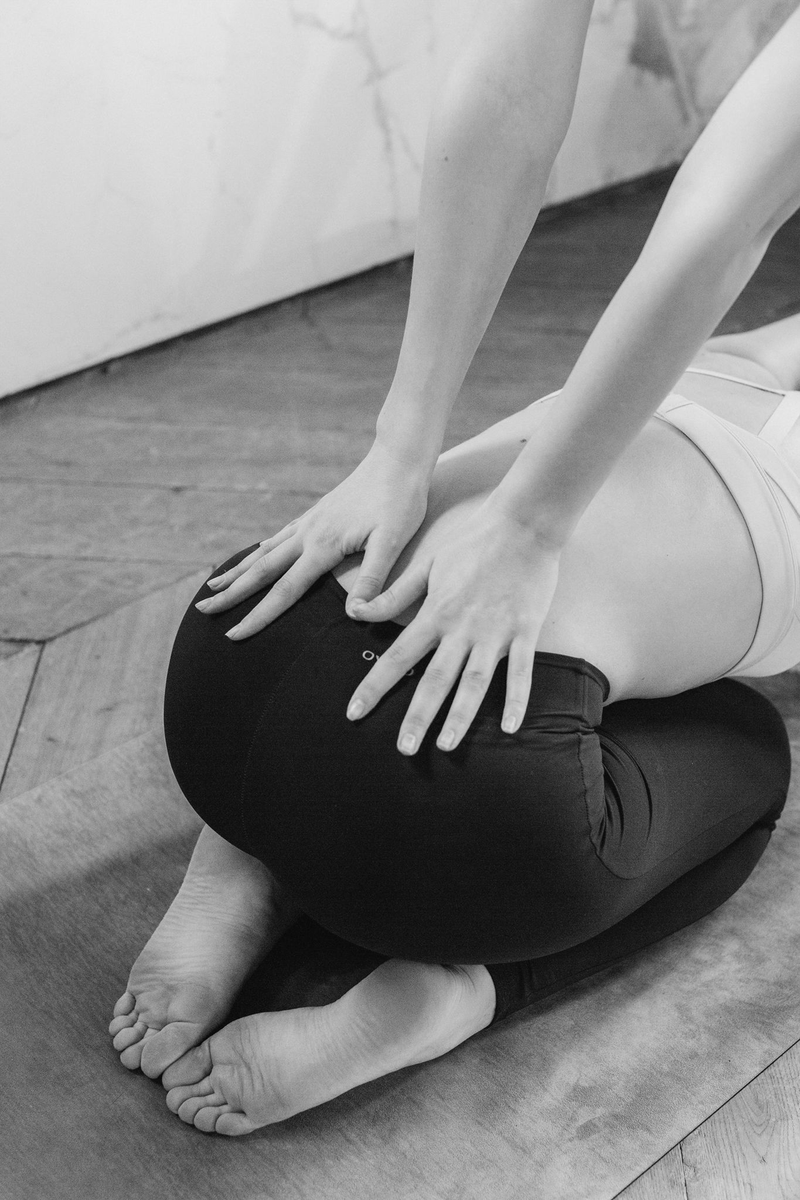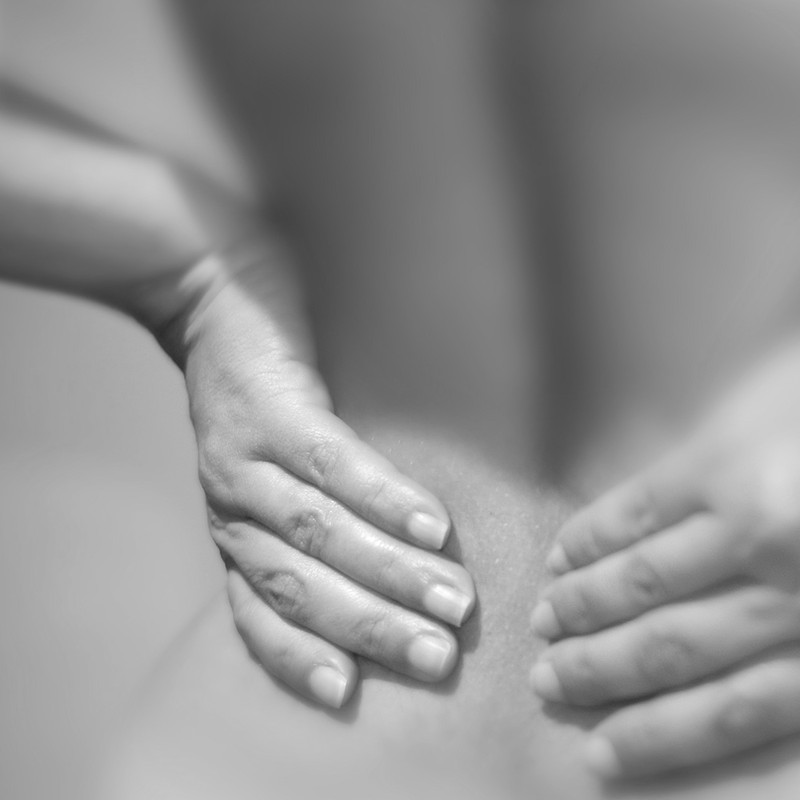Sciatica: What Causes It & How To Treat It
What exactly is sciatica?
“The first thing that’s important to understand is that sciatica is not a condition, but a symptom. It’s the name of the pain given when something (usually a herniated disc) compresses, irritates or inflames the sciatic nerve, or one of the sciatic nerve roots. Your sciatic nerve runs from your lower back to your feet, meaning pain can start in the lower back and radiate down to the bum to the thigh and leg on one side. Pain is also often accompanied by a pins and needles-like sensation around the lower extremities, which is a sign of a pinched nerve around the legs.” – Nadia Alibhai, osteopath
So, it’s not all about back pain?
“Not always. In fact, a more appropriate term to help people suffering from sciatica would be ‘lumbo-genic buttock and lower limb pain’. The origins are in the lumbar spine and aching pain, sensations of burning, numbness or sharp shooting pain are predominantly located in the lower half of the body. This includes the buttock, the back of the thigh, the lower leg and into the foot. True sciatica would have a linear pain running the entire course of the sciatic nerve, from the buttock region all the way down into the foot. However, sciatica has recently become a catch-all term for a mixture of these symptoms, with the lower back at the root of the cause. As pain is often only felt in the legs, this can lead to incorrect treatment and a disregard for the lower back, meaning the injury is left to get worse.” – Michael Fatica, osteopath
What are the most common causes of sciatica?
“In short, anything that compresses or pinches the roots of the sciatic nerve (at the base of the spine) can cause sciatica. Most commonly, a disc bulge – or a herniated disc – is to blame. Other causes include bone spurs – an overgrowth of bone on the vertebrae that puts pressure on the sciatic nerve – as well as spinal stenosis, which is linked to arthritis.” – Vivian Elwell, consultant neurosurgeon at London Bridge Hospital
Who is most at risk?
“Manual jobs that involve heavy lifting, twisting and strenuous activity, especially if done unsafely, can be contributing factors to sciatica. On the flip side, you’re also at risk if you lead a sedentary life – this often goes hand in hand with a weak core, which means less protection for the spine. Obesity is also a factor as extra weight can stress the spine, putting more pressure on your discs, leading to herniation. Other common risk factors include poor posture, previous injuries and poor ergonomics at work.” – Nadia
“It’s important to see sciatica as an injury, and people who partake in either short and intensive activities that strain the back and spine sporadically, or those who partake in bad habits for many years without taking necessary action to counteract this, will be at risk. An example of the former would be someone who has a yo-yo relationship with vigorous exercise, as opposed to consistent exercise over many years which allows the body to adapt. An example of the latter would be the desk-based sedentary worker who does little to keep his or her body strong.” – Michael

What triggers sciatica?
“Some people with a full disc bulge or herniation can experience excruciating pain whereas others will feel a dull ache. Regardless, the triggers remain the same. The most common include sitting or staying in bed for too long, wearing tight trousers or uncomfortable footwear, being inactive, sleeping in the wrong position, bending forward from the waist, lifting heavy objects, or standing or walking for too long. If you already have a niggling pain, any of these could worsen the condition.” – Nadia
How is it diagnosed?
“A physical examination that includes testing muscle strength and reflexes is a first step. For example, I ask patients to walk on their toes or heels, lifting their legs one at a time when lying on their back or rising from a squatting position. Sciatic pain usually gets worse when doing these movements. Patients with severe pain or pain that doesn’t improve after a few weeks may need an X-ray, MRI or CT scan.” – Nadia
How can you treat it?
Be Patient: “Mild sciatica usually goes away over time, typically within four to six weeks. In this time, physiotherapy and pain relief medication (alternating ibuprofen with paracetamol) can make a difference. If you haven’t seen improvements in this time frame, a targeted spinal injection can help.” – Vivian
Avoid High-Impact Exercise: “Sports like running or tennis can put sudden and intense strain on the rotational forces through your back and worsen underlying symptoms. Also avoid jumping, bending forward, weighted squats and heavy lifting in the gym, which can aggravate pressure on the sciatic nerve. Instead, do more yoga, Pilates, gentle walking and swimming, and stationary cycling.” – Vivian
Strengthen Your Core: “There is a clear connection between a weak core and sciatica. If you are struggling with pain, or can feel it niggling, work to strengthen your core as well as the muscles around the back. If in doubt, book in with a PT.” – Nadia
Consider Osteopathy: “Soft tissue massage can help relax muscles, improve blood flow and aid healing. Physical therapy can make the world of difference.” – Nadia
Think About How You Sleep: “Your sleeping position is important and can improve pain, helping you to recover more quickly. Get into the habit of lying on your pain-free side with a cushion or rolled-up towel between the legs and under the waist.” – Nadia
Stretch Gently: “Try a towel decompression stretch. Roll up a towel tightly to the size of a foam roller and, lying on your back with knees bent, lift your bum and back off the floor. Place the towel in the small of your back and relax slowly onto it. It can be achy initially as the lower back is gently unloaded, but with repetition it becomes more pleasant. To finish, roll your body to the side – do not lift your bottom. If you struggle to begin with, start with 20 seconds at a time.” – Michael
Avoid Sitting: “Being posture aware is crucial to avoid sciatica – slouching for prolonged periods is terrible for your discs. If you do have a desk-based job, take regular breaks from sitting.” – Nadia
At what point should you seek professional help?
“A red flag is bilateral pain – i.e. experiencing pain radiating down both legs at the same time. If you experience this, you should seek help immediately. Other red flags include bladder and bowel control issues as well as numbness in the area of your body that would contact the saddle of a horse. If you experience these, as well as if your back pain was as a result of a significant trauma, such as a car accident, seek medical attention.” – Michael
Finally – is there anything you can do to prevent sciatica?
“The causes of sciatica are years in the making, building below the surface, meaning prevention is cure. Many of us know we aren’t as healthy, strong or active as we should be, so take steps to make changes where you can. For example, try using a sit-stand desk if you’re a desk-based worker – this can make the world of difference. We can’t completely prevent accidents from happening, but a conditioned person with back-friendly habits, good strength and mobility will fare much better in the face of an injury.” – Michael
For more information and support, visit NadiaTheOsteopath.com, HCAHealthcare.co.uk & BackInShapeProgram.com.
DISCLAIMER: Features published by SheerLuxe are not intended to treat, diagnose, cure or prevent any disease. Always seek the advice of your GP or another qualified healthcare provider for any questions you have regarding a medical condition, and before undertaking any diet, exercise or other health-related programme.
DISCLAIMER: We endeavour to always credit the correct original source of every image we use. If you think a credit may be incorrect, please contact us at info@sheerluxe.com.


